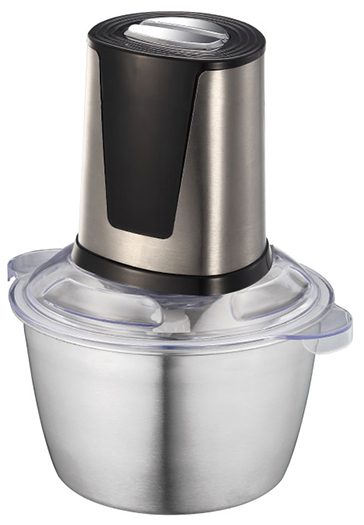According to foreign media reports, the National Academy of Engineering (NAE) decided to award the 2015 Charles Stark Draper Prize to five LED industry pioneers, namely Isamu Akasaki and George Crawford ( M. George Craford), Nick Holonyak Jr, Russell Dupuis, and Shuji Nakamura. The award will be presented to the five pioneers in Washington on February 24.
The Charles Stark Draper Prize is one of the highest awards in the American engineering community. The award is presented every two years by the National Academy of Engineering and is considered one of the "Nobel Prizes in Engineering".
Kaigham J. Gabriel, President and CEO of Draper Labs, said: “Great engineers imagine and create new things. These five pioneers create new technologies that bring new light to our lives and derive from them. A great industry that provides thousands of jobs while making a significant contribution to energy efficiency."
"The father of LED" Nick Holonyak invented the first red LED in 1962. At the time, he was working at General Electric, where he worked on III-V materials including gallium arsenide (GaAs). Later, he also developed phosphorus gallium arsenide (GaAsP LED), which is the support of all high-brightness LEDs today.
George Craford invented the first yellow LED in 1972 and led the team to develop nitrogen-doped phosphorus gallium arsenide to increase its brightness. He also participated in the first large-scale commercial production of red LEDs. He then developed the first high-brightness yellow and red LEDs and contributed to the development of high-efficiency white LEDs decades later.
In 1977, Russell Dupuis developed and perfected the metal organic chemical vapor deposition (MOCVD) process to enable the production of high-brightness LEDs and laid the foundation for the production of high-brightness LEDs, laser diodes, solar cells, and high-speed optoelectronic devices.
In 1987, Chisaki used MOCVD machines to grow high-quality GaN crystals on sapphire substrates, creating the first blue LED, making bright, energy-efficient white light sources possible.
In the first 20 years of the existence of red and green LEDs, the development of blue LEDs was considered an impossible thing by the industry at the time. In 1992, Nakamura Shuji successfully developed a high-brightness blue LED based on GaN. The invention of blue LEDs led the LED industry to begin commercial production of white LEDs.
Long-lasting, low-heat, high-efficiency and energy-saving LEDs have gradually been recognized and the scope of application is becoming wider and wider. The rapid development of the LED industry has effectively stimulated global employment growth and significantly reduced energy costs. According to the US Department of Energy data, in 2013, LED lighting reduced carbon dioxide emissions to more than 12 million tons in the United States.

The Charles Stark Draper Prize is one of the highest awards in the American engineering community. The award is presented every two years by the National Academy of Engineering and is considered one of the "Nobel Prizes in Engineering".
Kaigham J. Gabriel, President and CEO of Draper Labs, said: “Great engineers imagine and create new things. These five pioneers create new technologies that bring new light to our lives and derive from them. A great industry that provides thousands of jobs while making a significant contribution to energy efficiency."
"The father of LED" Nick Holonyak invented the first red LED in 1962. At the time, he was working at General Electric, where he worked on III-V materials including gallium arsenide (GaAs). Later, he also developed phosphorus gallium arsenide (GaAsP LED), which is the support of all high-brightness LEDs today.
George Craford invented the first yellow LED in 1972 and led the team to develop nitrogen-doped phosphorus gallium arsenide to increase its brightness. He also participated in the first large-scale commercial production of red LEDs. He then developed the first high-brightness yellow and red LEDs and contributed to the development of high-efficiency white LEDs decades later.
In 1977, Russell Dupuis developed and perfected the metal organic chemical vapor deposition (MOCVD) process to enable the production of high-brightness LEDs and laid the foundation for the production of high-brightness LEDs, laser diodes, solar cells, and high-speed optoelectronic devices.
In 1987, Chisaki used MOCVD machines to grow high-quality GaN crystals on sapphire substrates, creating the first blue LED, making bright, energy-efficient white light sources possible.
In the first 20 years of the existence of red and green LEDs, the development of blue LEDs was considered an impossible thing by the industry at the time. In 1992, Nakamura Shuji successfully developed a high-brightness blue LED based on GaN. The invention of blue LEDs led the LED industry to begin commercial production of white LEDs.
Long-lasting, low-heat, high-efficiency and energy-saving LEDs have gradually been recognized and the scope of application is becoming wider and wider. The rapid development of the LED industry has effectively stimulated global employment growth and significantly reduced energy costs. According to the US Department of Energy data, in 2013, LED lighting reduced carbon dioxide emissions to more than 12 million tons in the United States.

1.8L Food Choppers have a large capacity, which can chop lots of meats in one time and in very short time. Besides, they can very easy to clean. They can very popular with family using.
Description for 1.8L Food Choppers
300W/350W
S/S housing
Pure clear and thick glass bowl with double blades
2 speeds with safety switch
metal gear
stainless steel bowl optional

1.8L Food Choppers
1.8L Food Choppers,1.8L Choppers,1.8L Electric Food Chopper,Electric Baby Food Chopper
Flying Electronic Co., Ltd , https://www.flyingelectronic.com